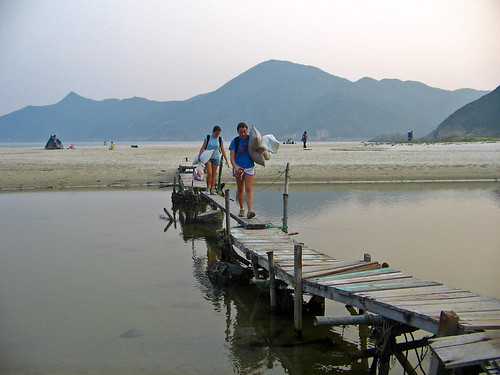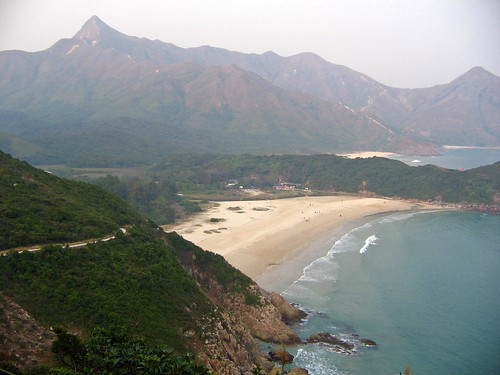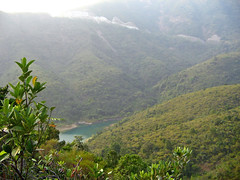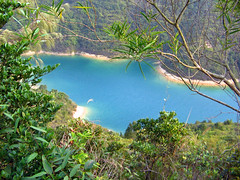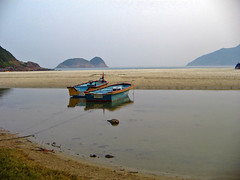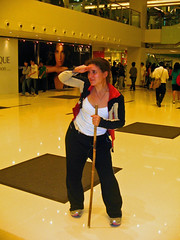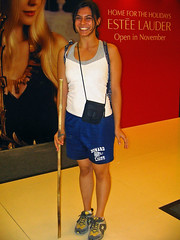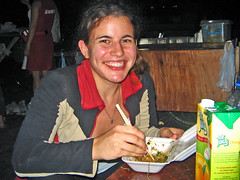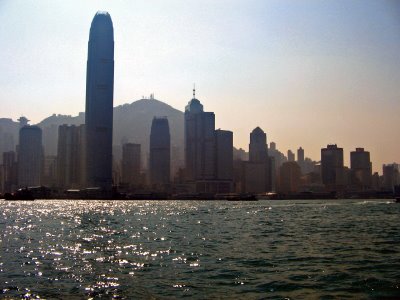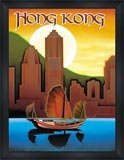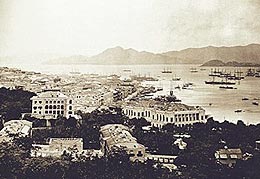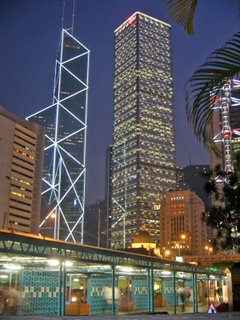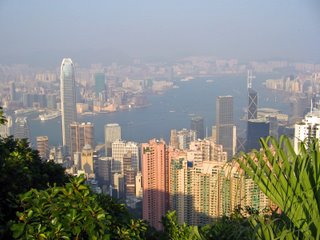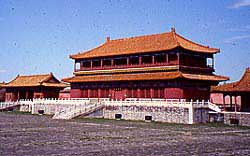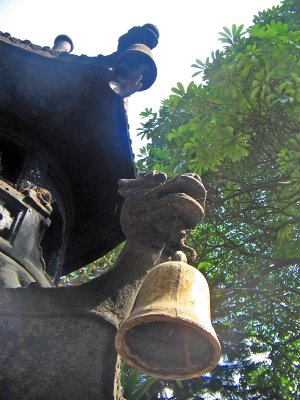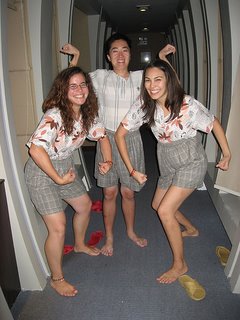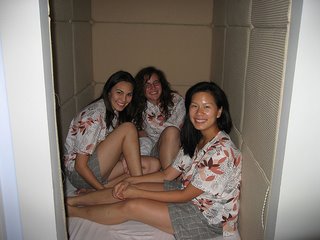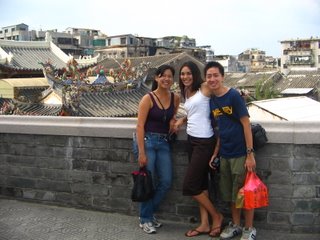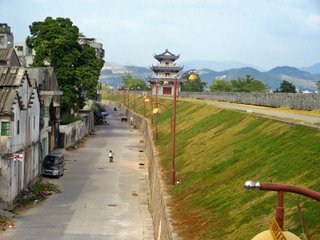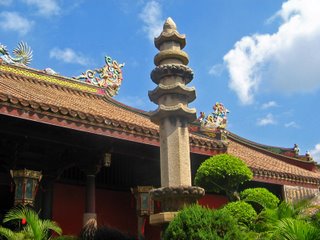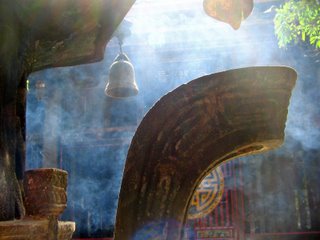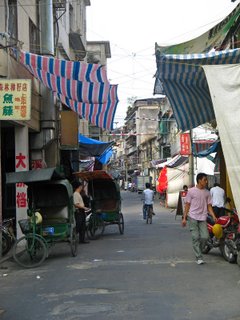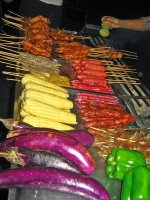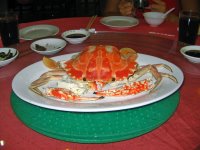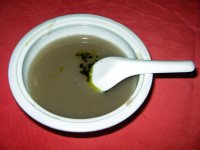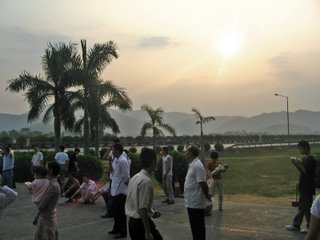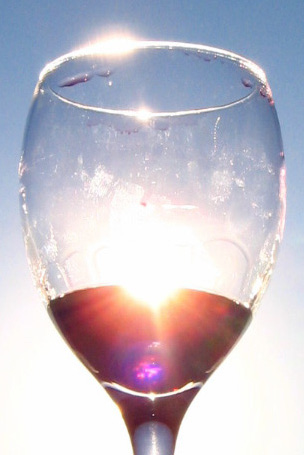Pomp and Ceremony
I am still teaching away, and really that's all I've
 been doing the last few weeks. Nothing exciting, just life as usual. This past weekend, however, all of us waiguorens got to get on a bus to Guangzhou, the capital city of Guangdong Province, and attend the opening ceremonies of the Guangdong International Tourism and Culture Festival held in the huge stadium, Tianhe Sports Centre. This festival is all about promoting tourism in Guangzhou and the surrounding region and reminding visitors that there is more to China than the Great Wall and the Terracotta Warriors.
been doing the last few weeks. Nothing exciting, just life as usual. This past weekend, however, all of us waiguorens got to get on a bus to Guangzhou, the capital city of Guangdong Province, and attend the opening ceremonies of the Guangdong International Tourism and Culture Festival held in the huge stadium, Tianhe Sports Centre. This festival is all about promoting tourism in Guangzhou and the surrounding region and reminding visitors that there is more to China than the Great Wall and the Terracotta Warriors.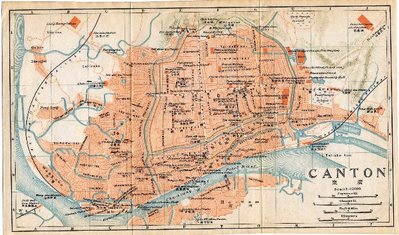
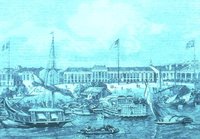 Guangzhou's (known to the 19th century English-speaking expats as "Canton City") history stretches back about 2200 years. It fostered important trade links with the European world from the 16th century onwards as a busy port city at the mouth of the Pearl River. The British were especially active traders in this region and eagerly pushed the import of opium to balance their trade deficit with China. The Chinese government was rather against the use of this drug and its degrading effects on society and tried to outlaw trade, leading to the infamous Opium Wars of the mid-1800s. In the aftermath, China was forced to sign unfair treaties with Britain and several other countries intervened to force more trade within China.
Guangzhou's (known to the 19th century English-speaking expats as "Canton City") history stretches back about 2200 years. It fostered important trade links with the European world from the 16th century onwards as a busy port city at the mouth of the Pearl River. The British were especially active traders in this region and eagerly pushed the import of opium to balance their trade deficit with China. The Chinese government was rather against the use of this drug and its degrading effects on society and tried to outlaw trade, leading to the infamous Opium Wars of the mid-1800s. In the aftermath, China was forced to sign unfair treaties with Britain and several other countries intervened to force more trade within China.Source
How things change over a century and a half! From the fall of the emperors to the rise of communism and the closing off of China to the rest of the world to its subsequent re-opening and remarkable, almost frenzied, push for economic reform. History is a volatile thing.
So back to the opening ceremonies - they were impressive, I can't deny that, but SO overdone! The government can't do anything festive without first putting on the most opulent display of fireworks, acrobats, colours, lights, animals, dancers, singers, musicians - just thousands of people performing from girls dressed from head to toe in gold to martial arts to people re-enacting the imperial army complete with galloping horses and riders doing stunts on their back. . . they even had real birds swimming in this artificial moat where all the fireworks were going off. This went on for hours. How long did it take to plan this? And how much did each one of those 1000 performers get paid? And if this is what they do for the opening of an annual tourism festival in one city, what the hell are the opening ceremonies for the 2008 Beijing Olympics gonna be like?? One can only speculate. . .
So it was interesting and fun to go to the provincial capital, although we didn't se
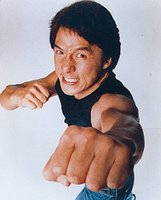 e much of it. We did see Jackie Chan though! He came out at the end of the ceremonies on this big float to perform this duet with Song Zuying, a famous Chinese singer. And then he was gone. And we were gone, back to Shenzhen. The next day all the foreign teachers gathered for a massive Thanksgiving potluck (American Thanksgiving, that is). We had everything - turkey, mashed potatoes, yams, cranberries, pumpkin pie, as well as some more untraditional things like sushi and fruit and bread and cheese. Western food - enough said. It was a blast.
e much of it. We did see Jackie Chan though! He came out at the end of the ceremonies on this big float to perform this duet with Song Zuying, a famous Chinese singer. And then he was gone. And we were gone, back to Shenzhen. The next day all the foreign teachers gathered for a massive Thanksgiving potluck (American Thanksgiving, that is). We had everything - turkey, mashed potatoes, yams, cranberries, pumpkin pie, as well as some more untraditional things like sushi and fruit and bread and cheese. Western food - enough said. It was a blast.